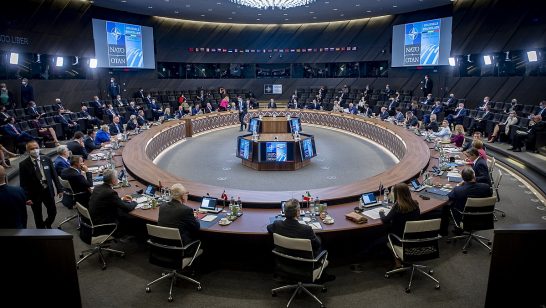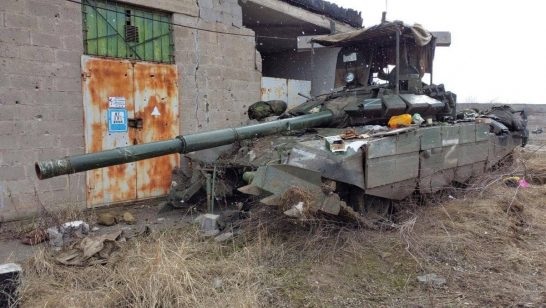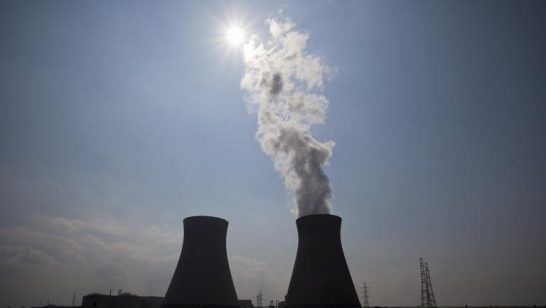
While it is still unclear how and when the war in Ukraine will end, the international community needs to consider the issue of accountability for Russia’s violations of international law and the staggering war crimes that are allegedly being perpetrated by Russian regular forces. Too little was done to respond to similar acts by Russia in Chechnya and Syria. So what can the multilateral system do to stand up for international law?
The military consequences of this attack are already devastating. A full-scale invasion of an independent European state by a European nuclear-weapon state is unprecedented. The bombings carried out by the Russian occupation forces close to the Polish border and recent accidental crashes of drones in bordering NATO member states are precisely the kind of military incidents that the ELN has been trying to prevent since the early days of its foundation: such incidents could trigger hitherto unprecedented scenarios. It needs to be clear that a war of aggression will not go unpunished.
Even before the latest atrocities, and despite the fact that the United States does not recognize the jurisdiction of the International Criminal Court (ICC), the United States and the European Union have called for the opening of international investigations by the Court and gathering evidence of atrocities. Now is the time to do it.
In the last few days, Western media have hinted at a possible but unconfirmed use of chemical weapons by Russia. NATO leaders are more cautious and limit themselves to warning against such a possibility. The proven use of aggressive chemicals by the Putin regime in attempts to eliminate political opponents makes Russia’s use of banned chemicals in warfare seem plausible, despite the fact that it is supposed to have destroyed all its chemical arsenals. If so, this would be a flagrant violation of the legally binding Convention on the Prohibition of Chemical Weapons – an additional crime.
The Russian claim that Ukraine possesses chemical and biological weapons is even more disturbing because, according to Moscow’s nuclear doctrine, an adversary’s use of such weapons would permit Russia to use nuclear weapons. According to that same doctrine, nuclear weapons could also be used in situations in which “the very existence of the state is under threat.” The ambiguity of this language, which could be open to a variety of interpretations, may give Russia ample and unpredictable space to use nuclear weapons. On several recent occasions, Russian leaders threatened the use of nuclear weapons and even spoke of Russia’s “right” to use the atomic weapon. However, international norms consider the threat of the use of nuclear weapons as a form of use of nuclear weapons.
Being a defensive alliance, NATO has refrained from making similar threats. It has, however, increased its preparedness to respond to a possible attack. The Western reaction remains hinged on increasingly heavy sanctions, which in Europe are mainly coordinated by the European Union, and on supplies of defensive weapons by individual states. Taking part directly in the conflict, accepting pressing Ukrainian requests for a no-fly zone, and supplying offensive weapons are still excluded as policy options by European governments.
At the multilateral level, UN Secretary-General António Guterres made an immediate and strong condemnation of the Russian invasion. The United Nations, however, remains paralysed in a scenario in which a Security Council’s permanent member is at the same time an aggressor and a judge who has the right to veto an unfavorable verdict. In these circumstances, the only choice is to bring the issue to the urgent attention of the General Assembly. This is what happened on March 2, when a resolution requiring the “immediate, complete, and unconditional withdrawal of all Russian military forces from Ukrainian territory” was approved by a large majority. UNGA resolutions are not legally binding, but it still makes sense to continue using that forum to stigmatise the aggression and to call upon the International Court of Justice to address all the perpetrated violations of international law.
The UN Charter also provides for the expulsion of states that have violated the UN Principles. One of these is the “prohibition of the threat and use of force against the territorial integrity of the States”. Even if the adoption of this measure is subject to a recommendation by the Security Council, which would certainly be vetoed by Russia, nothing prevents this procedure from being initiated.
Another issue that might be raised is Russia’s very status in the Security Council as successor to the USSR. The UN Charter still carries the name of the “Union of Soviet Socialist Republics” as one of the five permanent members of the Security Council, and Russia’s inheritance of the Soviet Union’s permanent seat was the result of a “gentlemen’s agreement” that was never formalized. The transition was neither a simple regime change nor the mere change of a label: it had major territorial, political, economic, and demographic implications, as the 15 states of the former USSR became independent, took the place of the Soviet Union, and joined the UN. The irony of history is that Ukraine, although under the Soviet yoke, became a founding member of the UN in 1945 upon the insistence of the Soviet Union. This is the same country which Russia’s president mutilated in 2014 and is now trying to annihilate – making us almost nostalgic for the USSR!
The opinions articulated above represent the views of the signatories and do not necessarily reflect the position of the European Leadership Network or the entirety of its membership. The ELN’s aim is to encourage debates that will help develop Europe’s capacity to address the pressing foreign, defence, and security policy challenges of our time.
Image: MusikAnimal, Wikimedia Commons.



